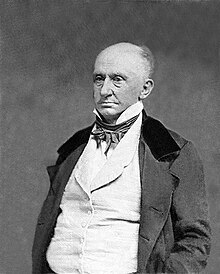Expanding the Extended Washington Family
Last month the Boston Globe ran an Associated Press dispatch about how two historic sites, Arlington House and Mount Vernon, were presenting the evidence that the Washington family—which is to say, Martha Washington’s descendants—included people of African ancestry.
This article focused on George Washington Parke (“Wash”) Custis, youngest son of John Parke (“Jack”) Custis, whom George and Martha Washington took in and raised from the early 1780s. (Wash Custis, shown here, is sometimes referred to as the first President’s adopted son, but I don’t think there was a formal adoption.)
The dispatch says:
There’s also strong evidence of men in preceding generations of Martha Washington’s family having children with enslaved women as well. As Henry Wiencek detailed in An Imperfect God:
TOMORROW: John Parke Custis’s secret son.
This article focused on George Washington Parke (“Wash”) Custis, youngest son of John Parke (“Jack”) Custis, whom George and Martha Washington took in and raised from the early 1780s. (Wash Custis, shown here, is sometimes referred to as the first President’s adopted son, but I don’t think there was a formal adoption.)
The dispatch says:
[In 1797] George Washington Parke Custis was 16 and attending Princeton, one of several schools he bounced in and out of. Before long, he was back home at Mount Vernon, where he would be accused of fathering children with slaves.In other words, we don’t need new evidence. We just need to take a clear-eyed look at the evidence we already have, recognizing that Wash Custis and his white relatives were very unlikely to make a formal admission of paternity. In 1826 Custis freed Arianna Carter’s daughter, Maria Syphax, with her children, and granted her seventeen acres of his land. That was about as much as we can expect from a prominent Virginia planter.
Two centuries later, the National Park Service and the nonprofit that runs Washington’s Mount Vernon estate are concluding that the rumors were true: In separate exhibits, they show that the first family’s family tree has been biracial from its earliest branches. . . .
Outside the marriage, Parke Custis likely fathered children with two of his stepfather’s slaves: Arianna Carter and Caroline Branham, according to the exhibits at Arlington House and Mount Vernon. . . .
He said no new, definitive evidence has surfaced to prove Parke Custis fathered girls with slaves; rather, the recognition reflects a growing sense that African-American history cannot be disregarded and that Arlington House represents more than Lee’s legacy, he said.
There’s also strong evidence of men in preceding generations of Martha Washington’s family having children with enslaved women as well. As Henry Wiencek detailed in An Imperfect God:
- John Custis (1678-1749) and his slave Alice had a son named Jack around 1739. Five years later he set “my dear black boy Jack” free through an action of the Virginia Council, which he sat on. There’s even a tradition that he toyed with rewriting his will to make Jack his heir instead of his legitimate son Daniel, who eventually became Martha’s first husband.
- Martha’s own father, John Dandridge (1700-1756), had a daughter by “a woman whose name is not known, of mixed white, Native American, and African blood.” That daughter, Ann, wasn’t manumitted until 1802.
- Martha’s son John Parke Custis (1754-1781) had a son by Ann Dandridge, his enslaved half-aunt, around 1780.
TOMORROW: John Parke Custis’s secret son.


No comments:
Post a Comment